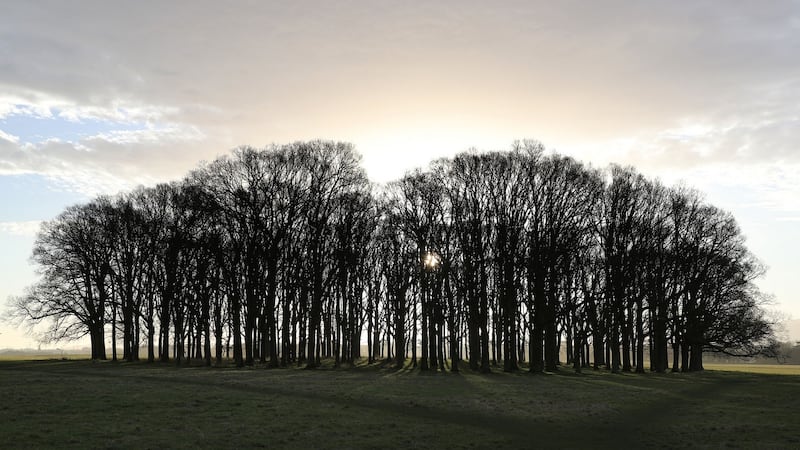Diamonds are a girl’s best friend – because of the inert embodied carbon, as the song goes. Diamonds, trees, bogs and our bodies are chock full of carbon. Tiny factories in leaves called chloroplasts use sunlight for the energy needed to capture carbon from the carbon dioxide in the air. Carbon gets incorporated into tree trunks, leaves and twigs; this means as you look around a forest you see solid objects made of concentrated air.

Animals cannot make their own carbon like plants can – they depend on eating plants, or on eating other animals that eat plants, to get carbon. Nature is expert at recycling carbon; capturing, decomposing and recapturing carbon is the normal cycle.
Have you ever thought about where your body fat goes when you lose weight? The carbon part is breathed out as carbon dioxide, solid fat becoming air. Some of the carbon captured by plants and animals cycles between solid and gas forms quite quickly; other carbon stays in the body of the plant or animal for longer and can actually draw carbon down from the atmosphere and lock it away for hundreds, thousands or millions of years.
Diamonds are the ultimate in long-term carbon. They formed deep in the Earth’s mantle from carbon trapped there during the planet’s formation long before carbon from land plants and animals started to build up. The carbon stored in fossil fuels is relatively recent compared to the carbon in diamonds.
The build-up of dead plant and animal sediments at the bottom of oceans or lakes without oxygen meant few bacteria or fungi could decompose the dead organisms and free the carbon back into the atmosphere. Over geological timescales of millions of years, layers of undecayed materials were put under immense pressures and temperatures turning into compressed, hard, and valuable deposits of coal, oil and natural gas.
The carbon in coal, oil and gas can be easily freed into the atmosphere by burning them. Millions of years of stored carbon has been pumped back into the atmosphere over the past few decades.
Climate change
Carbon dioxide is a greenhouse gas and its rising level in the atmosphere is responsible for human-induced climate change. Slowing down and stopping the fossil fuel carbon emissions is essential to combat climate change but we also need ways to capture carbon from the atmosphere and make it still, solid and inert for long periods of time.
Carbon can be pulled out of the atmosphere and stored for long periods of time in soils, bogs, ocean sediments and forests. Trees capture carbon and store it as wood. New forests pull carbon down from the atmosphere as they grow and even when trees are harvested they can provide medium-to-long-term carbon storage through the use of timber in long lived building materials or furniture.
One of the quickest and cheapest solutions to draw carbon from the atmosphere is to plant trees. There is huge potential on planet Earth to replant areas that were once forested with trees and to start the biggest carbon capture and storage project we can currently conceive of.
There is some controversy about the vast reported potential of tree planting. Scientists are not all in agreement about how much tree planting can contribute to climate solutions. It matters what kinds of trees are planted where.
Poorly-planned forests can decrease biodiversity if they replace other, richer habitats, swapping a climate problem for a biodiversity problem. Single species plantations, like the ubiquitous Sitka spruce, provide habitat for relatively few other species.
Forests on the wrong kinds of soils can lead to the release of carbon from peaty, carbon-rich soils. Highly flammable tree species planted in fire prone and warming regions can lead to rapid carbon cycling between trees and the atmosphere that provides few long-term carbon benefits.
Effective use of forests as nature-based solutions for our climate woes requires a long view, both backwards in time and forwards in time. We need accurate whole of life-cycle carbon accounting and biodiversity monitoring to track the net carbon and nature gains from planting certain tree species in particular locations.
While there may be new ways developed to draw down carbon from the atmosphere, designing the right kinds of forests in the right places to capture and store carbon is currently as close as we are likely to get to making diamonds from air.
Yvonne Buckley is an ecologist and Professor of Zoology at Trinity College Dublin




